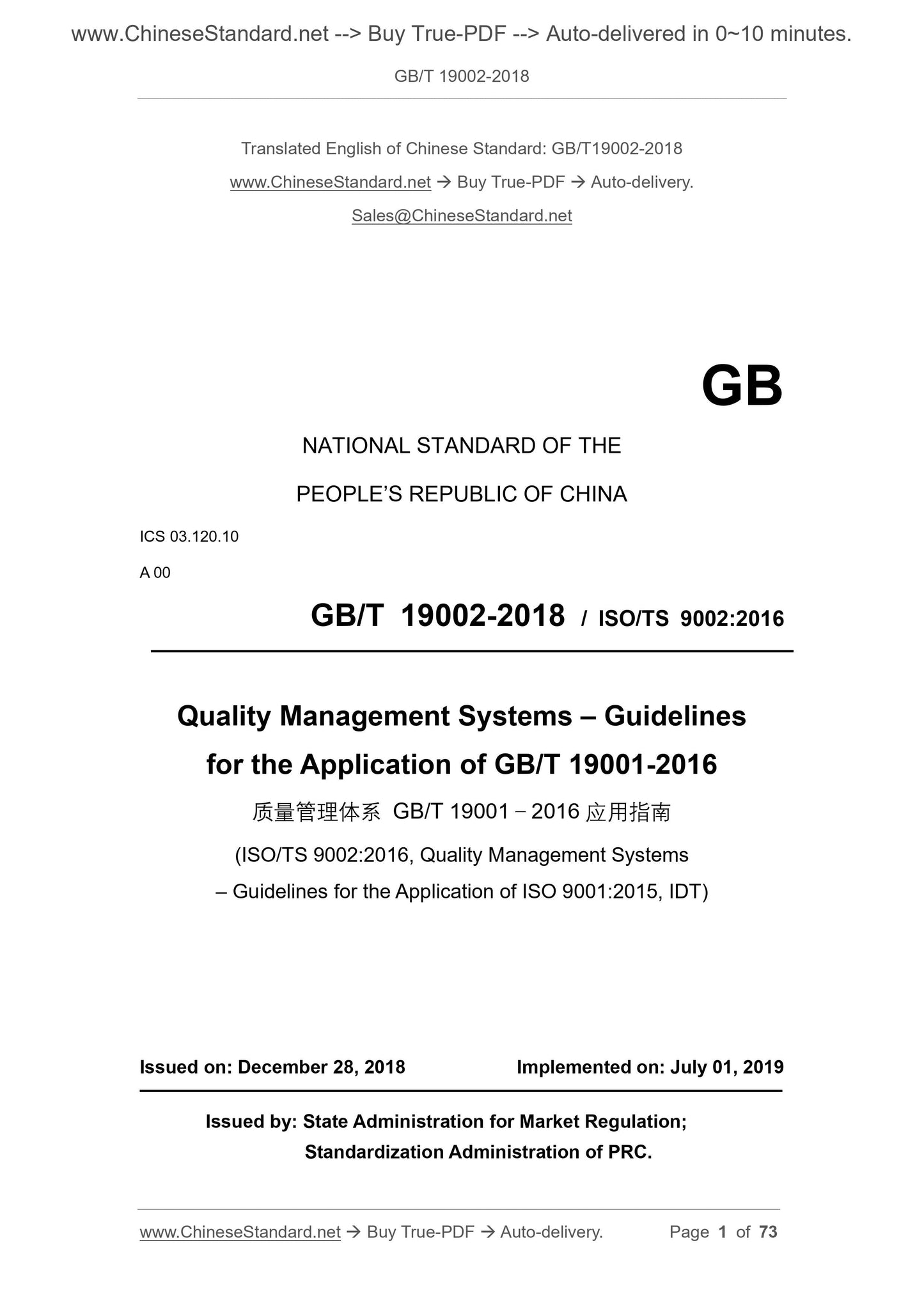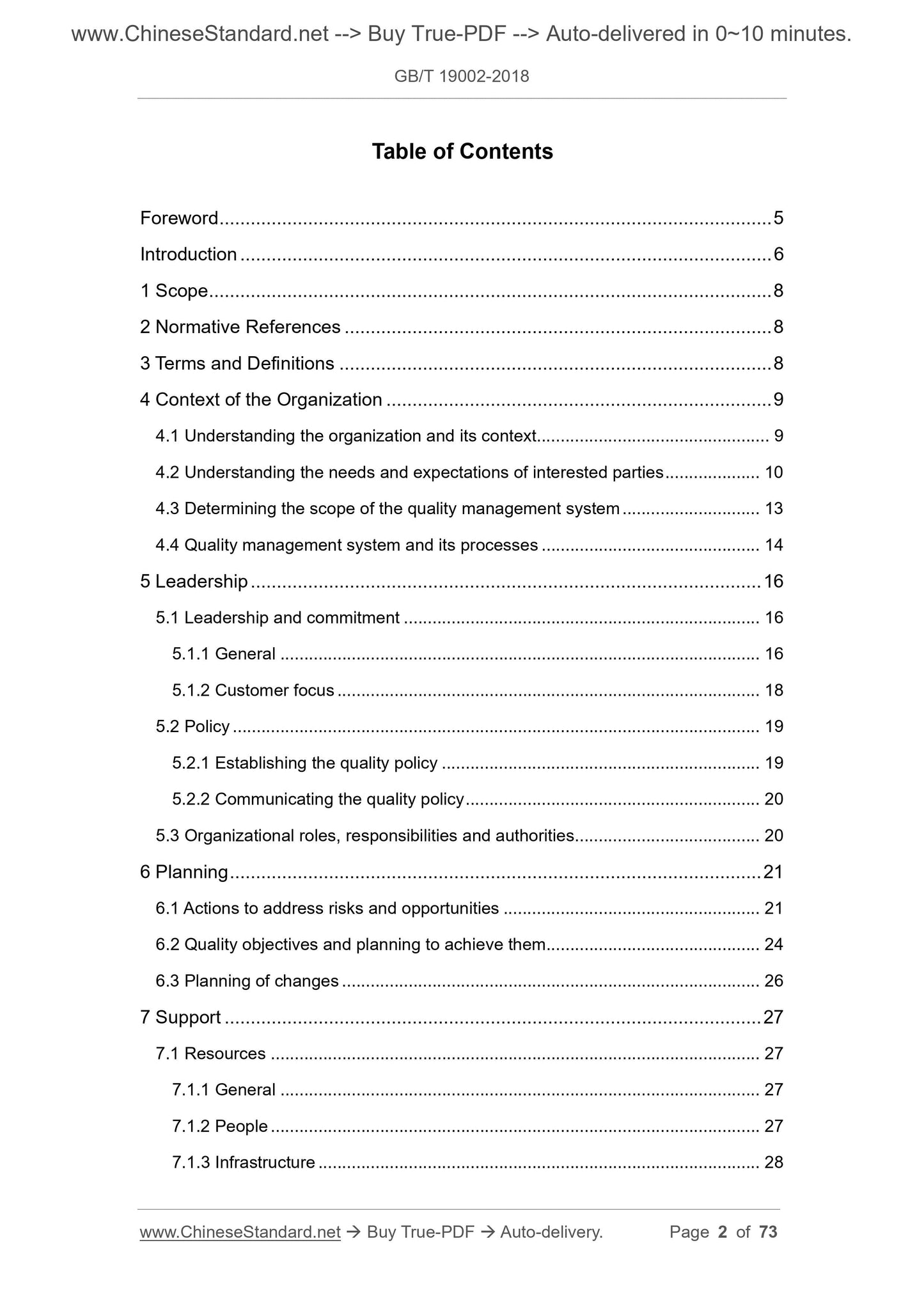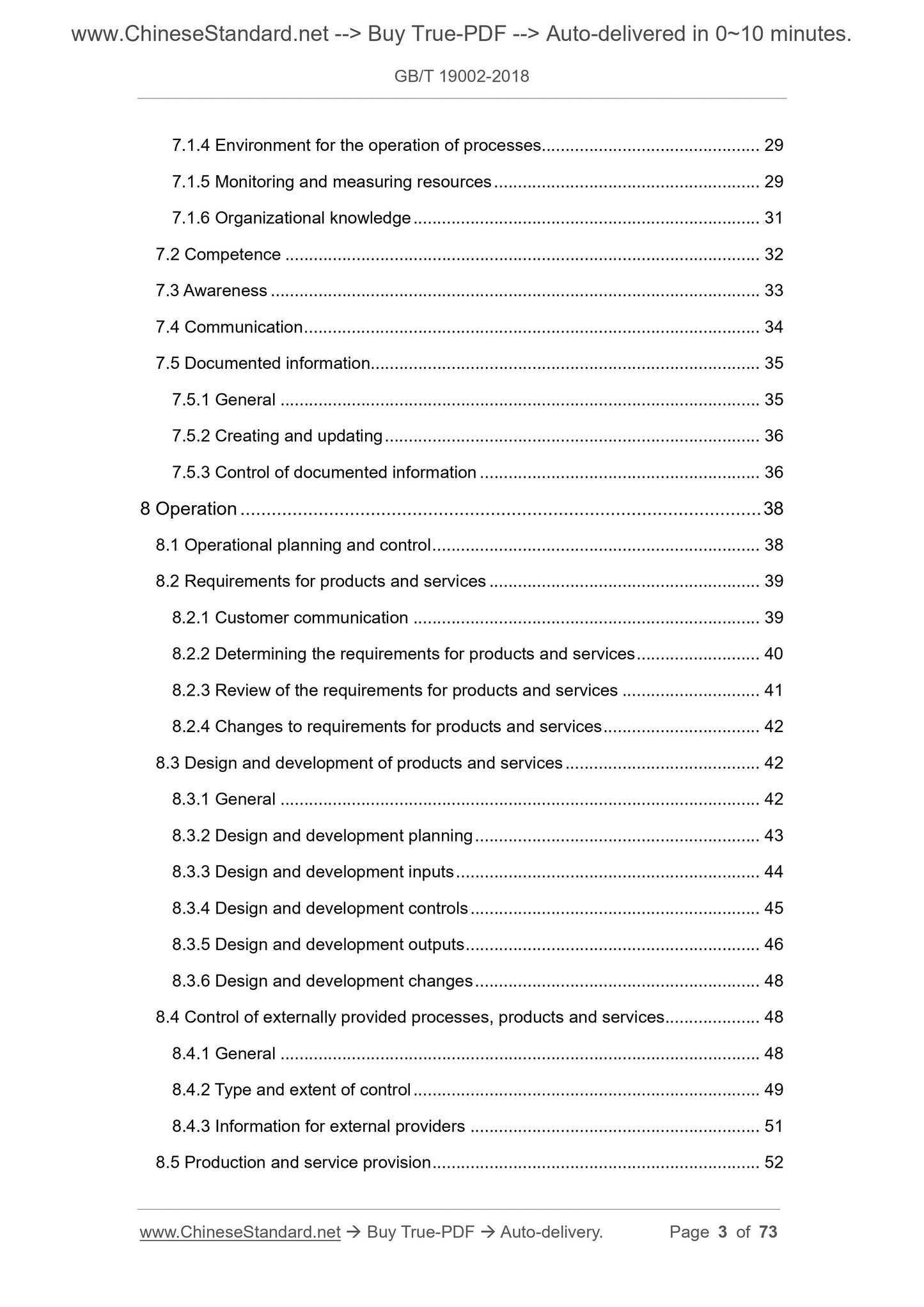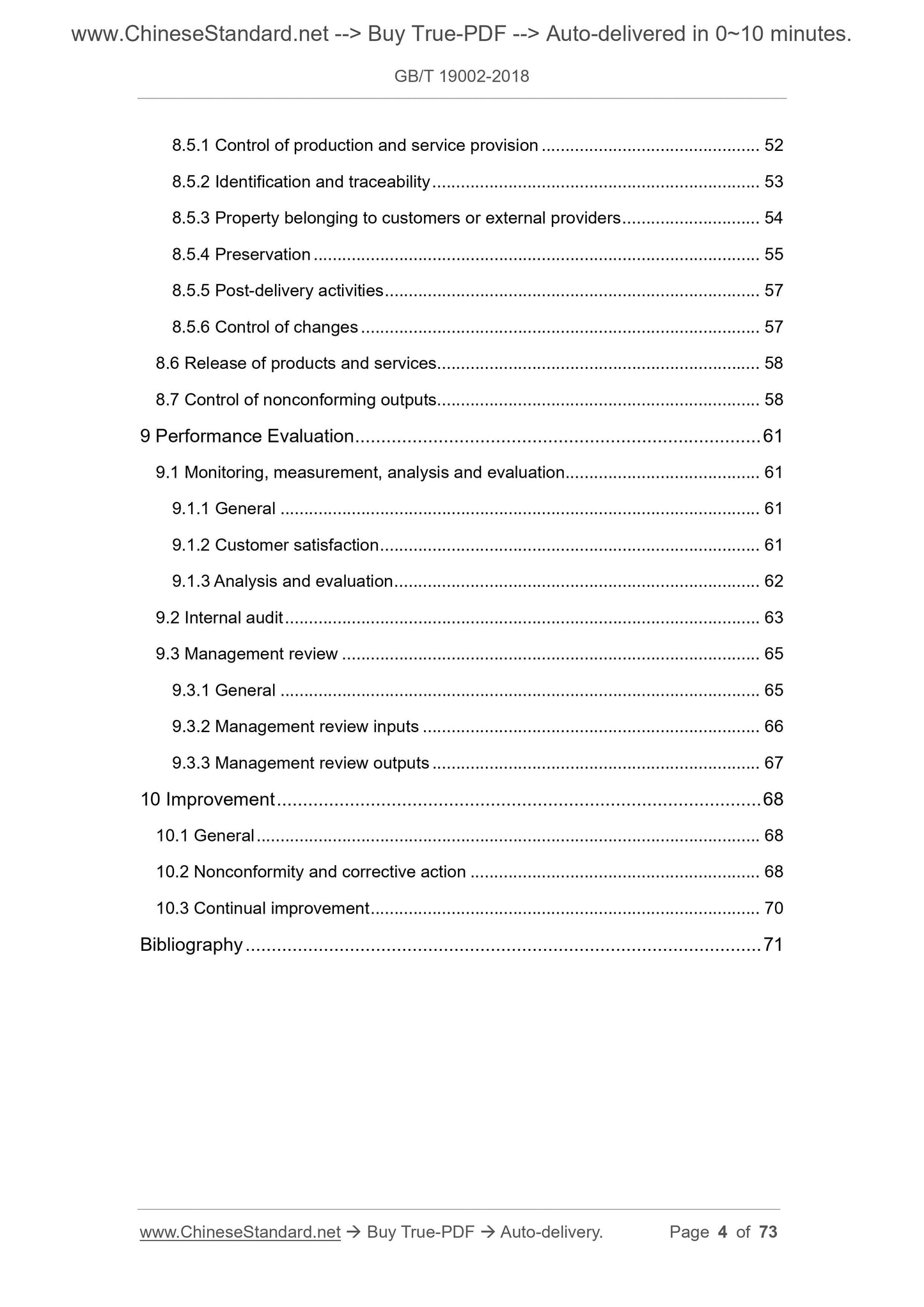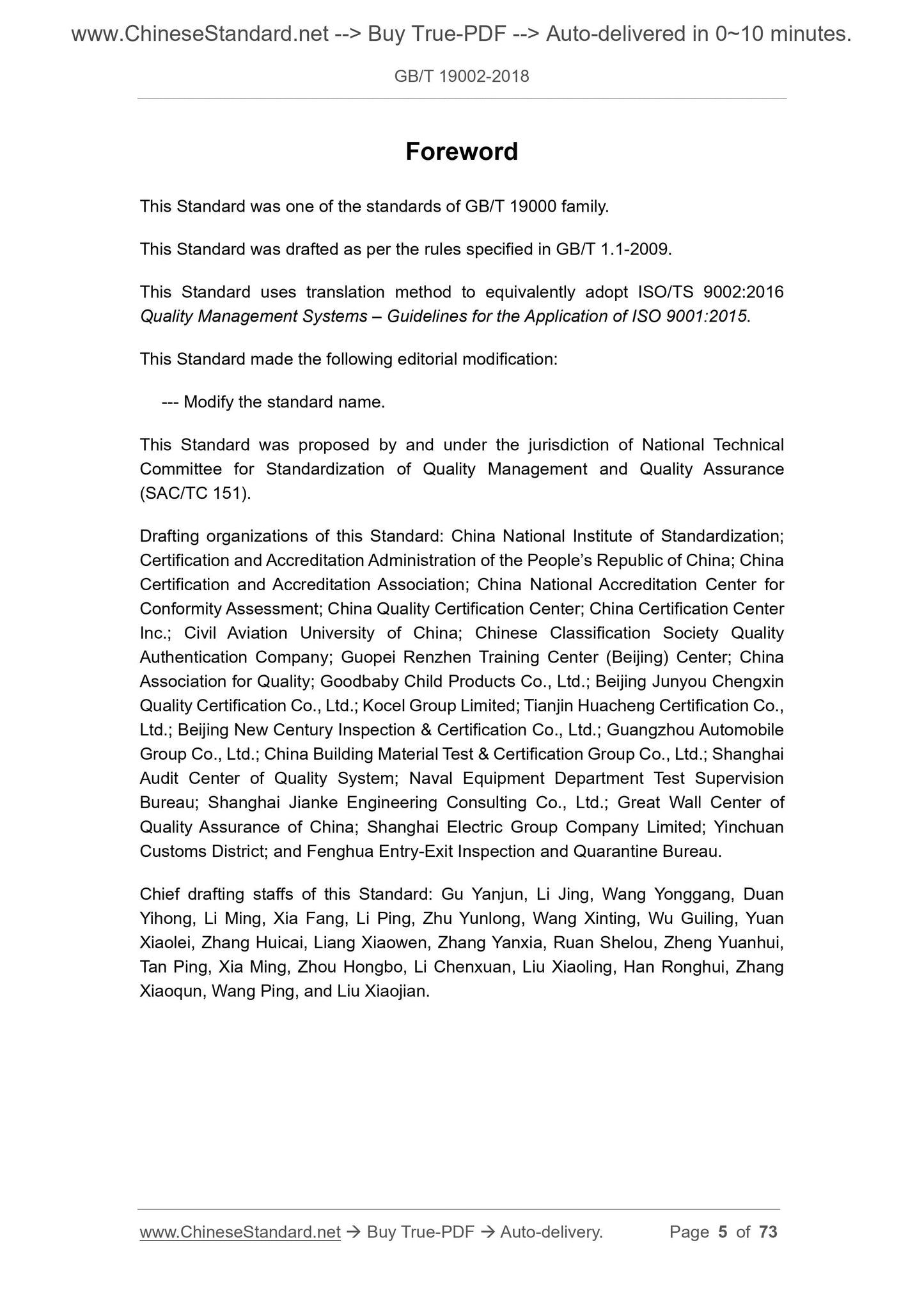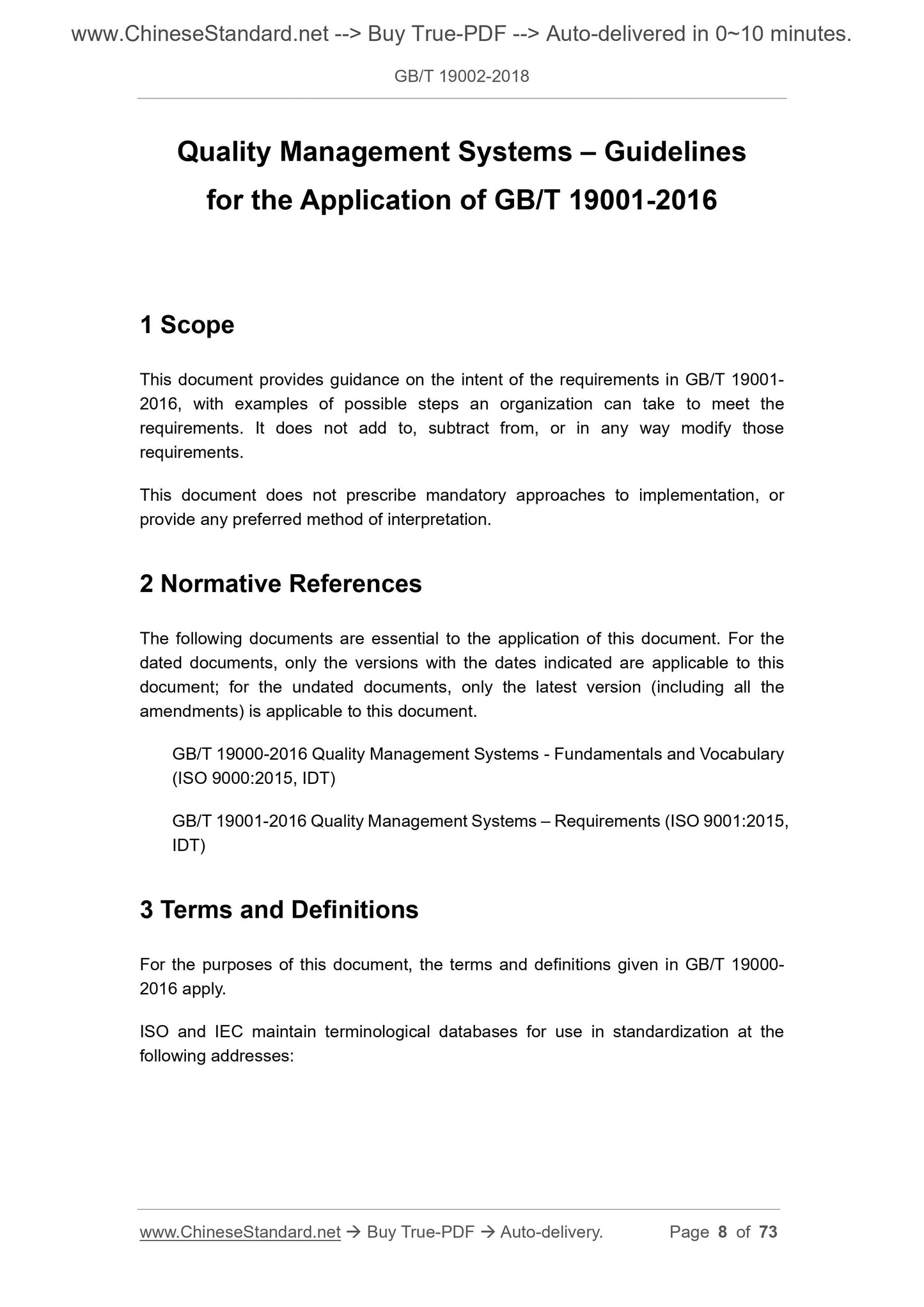1
/
of
6
www.ChineseStandard.us -- Field Test Asia Pte. Ltd.
GB/T 19002-2018 English PDF (GB/T19002-2018)
GB/T 19002-2018 English PDF (GB/T19002-2018)
Regular price
$500.00
Regular price
Sale price
$500.00
Unit price
/
per
Shipping calculated at checkout.
Couldn't load pickup availability
GB/T 19002-2018: Quality management systems -- Guidelines for the application of GB/T 19001-2016
Delivery: 9 seconds. Download (and Email) true-PDF + Invoice.Get Quotation: Click GB/T 19002-2018 (Self-service in 1-minute)
Newer / historical versions: GB/T 19002-2018
Preview True-PDF
Scope
This document provides guidance on the intent of the requirements in GB/T 19001-2016, with examples of possible steps an organization can take to meet the
requirements. It does not add to, subtract from, or in any way modify those
requirements.
Basic Data
| Standard ID | GB/T 19002-2018 (GB/T19002-2018) |
| Description (Translated English) | Quality management systems -- Guidelines for the application of GB/T 19001-2016 |
| Sector / Industry | National Standard (Recommended) |
| Classification of Chinese Standard | A00 |
| Classification of International Standard | 03.120.10 |
| Word Count Estimation | 42,495 |
| Date of Issue | 2018-12-28 |
| Date of Implementation | 2019-07-01 |
| Issuing agency(ies) | State Administration for Market Regulation, China National Standardization Administration |
Share
